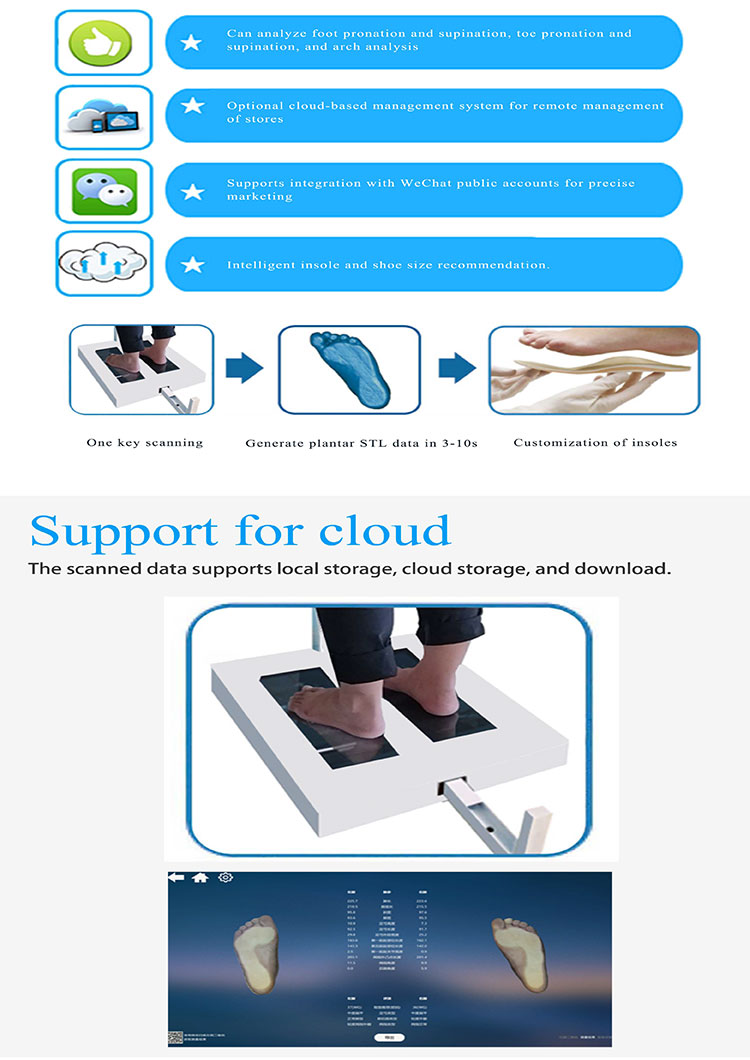Personalized Shoe-Making Process of Three-Dimensional Foot Scanner Linked with 3D Printing
I. Data Acquisition Stage
High-Precision Foot Scanning
Using laser scanning technology (accuracy up to 0.5mm) or structured light scanning technology, complete three-dimensional foot data acquisition within 10 seconds, obtaining more than 20 key parameters including foot length, foot width, and arch height.
The scanning process supports measurement under load/non-load states, capable of identifying arch types (normal/high/flatfoot) and pronation/supination conditions.
Dynamic Data Supplement
Combined with plantar pressure plate to analyze gait characteristics, obtaining dynamic pressure distribution data, providing biomechanical basis for insole support design.
II. Data Processing and Design
Three-Dimensional Modeling
The system automatically generates an STL-format foot model, supporting secondary editing with CAD/CAM software, and allows adjustment of parameters such as shoe last curvature and support point position.
Personalized Design
Based on scanning data, automatically match with the shoe model database, recommending suitable toe shapes (pointed/square/round) and outsole patterns. Designers can manually optimize details such as breathable hole layout on the upper and reinforced areas at the heel.
III. 3D Printing Production
Material Selection
According to sports requirements, select TPU (elastic), nylon (lightweight), or carbon fiber composite materials (high strength) for printing.
Layered Manufacturing
Using SLS (Selective Laser Sintering) or FDM (Fused Deposition Modeling) technology, print the upper, midsole, and insole components layer by layer, with layer thickness controlled at 0.1–0.3mm.
IV. Post-Processing and Assembly
Surface Treatment
Carry out polishing, sanding, or coating treatment on printed parts to improve comfort and durability.
Function Integration
Assemble 3D-printed components with traditional accessories such as shoelaces and Velcro to complete the final product.
V. Quality Verification
Fitting Test
Verify the insole support effect through pressure distribution detection, adjusting to achieve optimal fit.
Durability Test
Simulate actual sports scenarios for bending and impact testing to ensure product service life.
This process shortens the traditional shoemaking cycle from 2–3 weeks to within 48 hours, realizing true “foot-measured customization.”

 +86-0755-86131192
+86-0755-86131192 2025-09-02
2025-09-02 Back to list
Back to list








 +86-0755-86131192
+86-0755-86131192